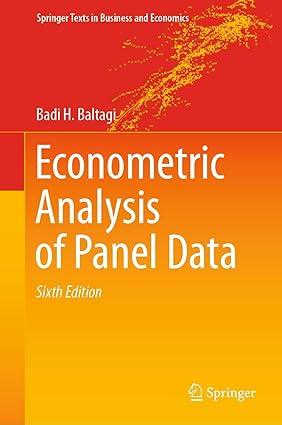Twin Crises. Hutchison and Noy (2005) investigate the output effects of banking and currency crises in emerging
Question:
Twin Crises. Hutchison and Noy (2005) investigate the output effects of banking and currency crises in emerging markets, focusing on whether "twin crises" entail large losses. Using a panel data set of 24 emerging market economies over 1975-97, they find that currency (banking) crises are very costly, reducing output by about \(5-8 \%(8-10 \%)\) over a \(2-4\) year period. They find more than 51 currency and 33 banking crises episodes over the past 25 years in their emerging markets sample and 20 occurrences of "twin crises"-currency and banking crises that occurred simultaneously.
(a) Replicate their Table 5, column (1), p.743, which runs a Hausman-Taylor model regressing Real GDP growth (dlrgdp) on its lagged value (dlrgdpl), the change in budget surplus to real GDP ratio at period (t-1) (dlbsurgd), credit growth (dlcrdtl), external growth rate (fgrowth1), real exchange rate overvaluation (t-1) (rxrdev5), openness (open1), and banking crisis (crisis).
(b) Replicate Table 5, column 3, page 743, which adds currency crisis dummy at times (t) and (t-1) (xrp_n, xrp_nwl) as well as a twin crisis dummy (twin2).
Step by Step Answer:







